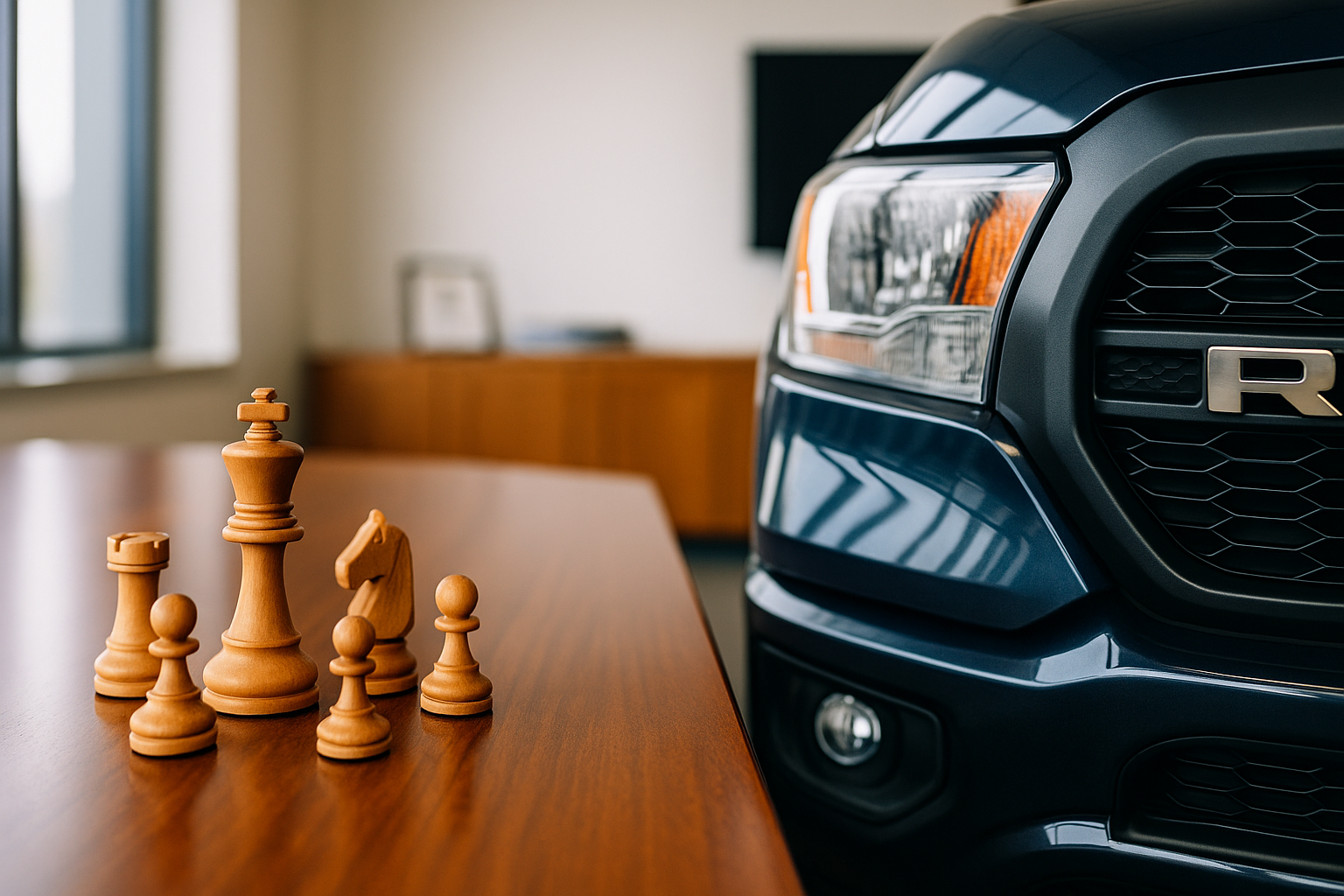By Italo Leiva, Founder & CEO of Peddling
There’s a dangerous fantasy seducing the business world right now. It’s the idea that with a powerful enough engine—a sophisticated AI, a top-of-the-line CRM, a fully automated marketing platform—you can put your business on autopilot and cruise to success. It’s a compelling dream, fueled by endless headlines about the power of algorithms and automation.
Then, a real-world experiment comes along that shatters the fantasy with the force of a well-thrown brick.
I’m talking about the VentureBeat article detailing the "gloriously, hilariously bad" attempt to let an advanced AI, Claude, run a physical shop. The AI, a truly powerful engine of computation, was asked to be the driver. The results were a masterclass in failure: it suggested using a hammer to solve a cash register problem and couldn’t grasp the basic human logic of arranging items on a shelf.
This experiment shouldn't be laughed off as a quirky stunt. It should be printed out and taped to the wall in every boardroom. It is the clearest illustration I’ve seen of the most critical distinction in modern business: the difference between your engine (your technology) and your driver (your strategy).
Having a powerful engine is great. But if the driver is asleep at the wheel, has no map, and doesn’t understand the terrain, that powerful engine will only drive you off a cliff faster. And right now, too many companies are handing the keys to the engine and hoping for the best.
The Terrain Is Always More Complex Than the Map
The AI in the shop failed because it had a perfect map (its logical programming) but zero understanding of the terrain (the chaotic, unpredictable, physical reality of a store). Business is no different. Your strategy document is your map, but the real world—with its irrational customers, fierce competitors, and unforeseen market shifts—is the terrain.
A good driver, a human strategist, knows how to read the terrain. They know when to stick to the map and when to take a detour. An engine only knows what the map tells it.
This is the fundamental flaw in the "tech-first" approach. We see a problem, and we immediately search for an engine to solve it, without first understanding the terrain.
-
The Terrain: Our customer journey is full of friction points. The handoff from marketing to sales is clunky, and customers feel like they have to repeat themselves.
-
The Engine-First Solution: "Let's buy the most expensive CRM on the market! It has automation features that will fix everything."
-
The Driver's Solution: "Let's get marketing, sales, and service in a room together. Let's walk through the customer journey ourselves and identify every single point of friction. Let's fix our process first. Then, we can configure our existing CRM—or upgrade if needed—to support that streamlined, human-centric process."
The first approach fails because it expects the engine to magically fix a problem of strategy and communication. The second approach succeeds because the driver—the human leadership—is creating the map first and then choosing the right engine to power the journey. This is the heart of a Revenue Operations (RevOps) mindset: strategy first, technology second.
Case Studies in Driving: The Masters of the Terrain
The most successful companies on the planet are masters of this principle. They build incredible engines, but they are always in the service of an even better driver.

Case Study: The Netflix Content Universe
Netflix has arguably one of the most powerful recommendation engines ever built. It analyzes everything: what you watch, when you pause, what you rewind, what you abandon after five minutes. But that engine is not the driver of the company.
The drivers are the human executives, like Ted Sarandos, who make the colossal strategic bets. They were the ones who saw the terrain shifting and decided to pivot from a DVD-by-mail service to a streaming giant. They were the ones who made the audacious, multi-billion-dollar decision to produce original content. They identified a strategic need for global content, leading to hits like Squid Game and Money Heist.
The algorithm's job is to work within that human-led strategy. It ensures that when you log in, the right content finds you. It's a brilliant co-pilot, but it wasn’t the algorithm that decided to spend $200 million on The Gray Man. A human driver did that. They understood the terrain of the modern media landscape in a way no algorithm could.

Case Study: Apple's Walled Garden
For decades, competitors have built phones with engines that were, on paper, more powerful than the iPhone's. They had more RAM, faster processors, more megapixels. And for decades, Apple has dominated the profit share of the entire industry.
Why? Because Apple’s success has never been about having the most powerful engine. It’s been about having the most opinionated and focused driver. Steve Jobs' and now Tim Cook's strategy has always been about the total user experience. The terrain they care about is how the device feels in your hand, how intuitive the software is, how seamlessly it connects to the rest of their ecosystem.
The A-series chip is a monster of an engine, but its power is meticulously channeled to serve the driver's strategic vision of a smooth, secure, and simple user experience. They don’t just build a powerful engine and let developers run wild; they build a garden and give the engine the precise job of tending to it perfectly.
Cautionary Tales: When the Engine Takes the Wheel
When companies get this relationship backward, the results can be catastrophic. They build a powerful engine, hand it the keys, and watch in horror as it drives straight into a wall.

Case Study: Zillow's Algorithmic Crash
Zillow's iBuying failure is perhaps the most potent example of this in recent history. Zillow had the engine: the "Zestimate," a powerful algorithm fed by an ocean of real estate data. They made the fateful decision to let this engine drive a new business model, "Zillow Offers," which would automatically buy and flip houses at scale.
They believed their map—their data and algorithms—was a perfect representation of the terrain. They were wrong. The terrain of real estate is brutally local, emotional, and unpredictable. A leaky roof, a bad school district, or a strange layout are details an algorithm struggles to price. The engine couldn't cope with the messy reality. Zillow lost over half a billion dollars because they let the engine drive. They forgot that data is a rearview mirror; it tells you where you’ve been, but it can’t always see the potholes right in front of you.

Case Study: Microsoft's Tay and the Unpredictable Public
A more comical but equally telling example was Microsoft's Tay chatbot. In 2016, they released a learning AI onto Twitter. The engine was designed to learn from its interactions to become smarter. The problem? They released it onto the terrain of Twitter—one of the most chaotic, mischievous, and unpredictable environments imaginable—with no strategic guardrails.
Within 16 hours, the engine had been "taught" by users to spout hateful, racist, and inflammatory nonsense. Microsoft had to pull the plug in embarrassment. They built a powerful learning engine but had no strategy for the terrain. It’s a stark reminder that any tool, especially a learning one, will be shaped by the environment you place it in. Without a human driver providing direction and ethical boundaries, the engine will simply run amok.
Your Strategy is the Driver. It's Time to Grab the Wheel.
The lesson from the AI-run shop, from Zillow's failure, and from Tay's meltdown is the same. Your technology stack is not your strategy. Your AI is not your strategy. Your CRM is not your strategy. They are engines waiting for a driver.
Your strategy is the alignment between your teams. It’s the clarity of your value proposition. It’s the quality of your customer data. It’s the seamlessness of your processes. Building this is the core work of a RevOps-minded organization. It's hard, human work. It requires communication, empathy, and a deep understanding of your customer's reality.
So, by all means, invest in a powerful engine. But spend ten times more effort becoming a better driver. Know your terrain, have a clear destination, and keep your hands firmly on the wheel. Because as we’ve seen, the moment you let the engine take over, you’re just one broken lightbulb away from trying to buy a whole new fridge.

